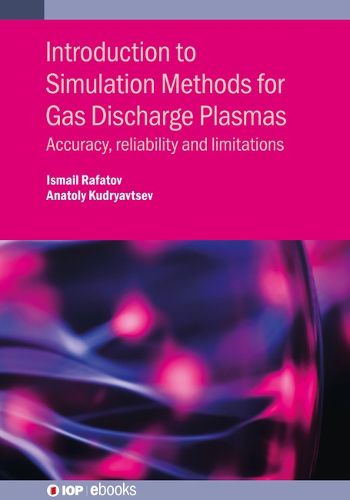Readings Newsletter
Become a Readings Member to make your shopping experience even easier.
Sign in or sign up for free!
You’re not far away from qualifying for FREE standard shipping within Australia
You’ve qualified for FREE standard shipping within Australia
The cart is loading…






This title is printed to order. This book may have been self-published. If so, we cannot guarantee the quality of the content. In the main most books will have gone through the editing process however some may not. We therefore suggest that you be aware of this before ordering this book. If in doubt check either the author or publisher’s details as we are unable to accept any returns unless they are faulty. Please contact us if you have any questions.
Gas discharge plasma is the most common type of low-temperature plasma, with a large number of practical applications covering almost all areas of modern science and technology. This book is an introduction to the numerical modeling methods for gas discharge plasmas. It is intended to assist and direct graduate students and junior researchers, whose research activity deals with computational plasma physics. Topics covered include the essentials of basic modelling approaches (particle, fluid, and hybrid) for gas discharges, and the implementation of these methods with examples of glow (DC and RF) discharges. Numerical studies of nonlinear dynamics and formation of spatio-temporal patterns in gas discharge systems are also presented.
Key Features
Focuses solely on gas discharge plasmas Covers basic modelling techniques, including particle, fluid, and hybrid Provides details of applications and implementation for the considered methods Special emphasis is given to the applicability and reliability of different modelling techniques Provides specific examples of numerical simulations of the gas discharge plasmas
If you model low pressure (non-thermal) plasmas, this book will provide the fundamental equations that can be used to simulate various aspects of the low-pressure plasma. You will also learn about the physics behind the equations through explanations and graphical plots of results including comparisons between simulations and experimental results. The reader would need a background in plasma physics and some familiarity with Boltzmann’s equation to fully appreciate this book.
John J Shea IEEE Electrical Engineering Magazine, May June 2021 Vol. 37
$9.00 standard shipping within Australia
FREE standard shipping within Australia for orders over $100.00
Express & International shipping calculated at checkout
This title is printed to order. This book may have been self-published. If so, we cannot guarantee the quality of the content. In the main most books will have gone through the editing process however some may not. We therefore suggest that you be aware of this before ordering this book. If in doubt check either the author or publisher’s details as we are unable to accept any returns unless they are faulty. Please contact us if you have any questions.
Gas discharge plasma is the most common type of low-temperature plasma, with a large number of practical applications covering almost all areas of modern science and technology. This book is an introduction to the numerical modeling methods for gas discharge plasmas. It is intended to assist and direct graduate students and junior researchers, whose research activity deals with computational plasma physics. Topics covered include the essentials of basic modelling approaches (particle, fluid, and hybrid) for gas discharges, and the implementation of these methods with examples of glow (DC and RF) discharges. Numerical studies of nonlinear dynamics and formation of spatio-temporal patterns in gas discharge systems are also presented.
Key Features
Focuses solely on gas discharge plasmas Covers basic modelling techniques, including particle, fluid, and hybrid Provides details of applications and implementation for the considered methods Special emphasis is given to the applicability and reliability of different modelling techniques Provides specific examples of numerical simulations of the gas discharge plasmas
If you model low pressure (non-thermal) plasmas, this book will provide the fundamental equations that can be used to simulate various aspects of the low-pressure plasma. You will also learn about the physics behind the equations through explanations and graphical plots of results including comparisons between simulations and experimental results. The reader would need a background in plasma physics and some familiarity with Boltzmann’s equation to fully appreciate this book.
John J Shea IEEE Electrical Engineering Magazine, May June 2021 Vol. 37